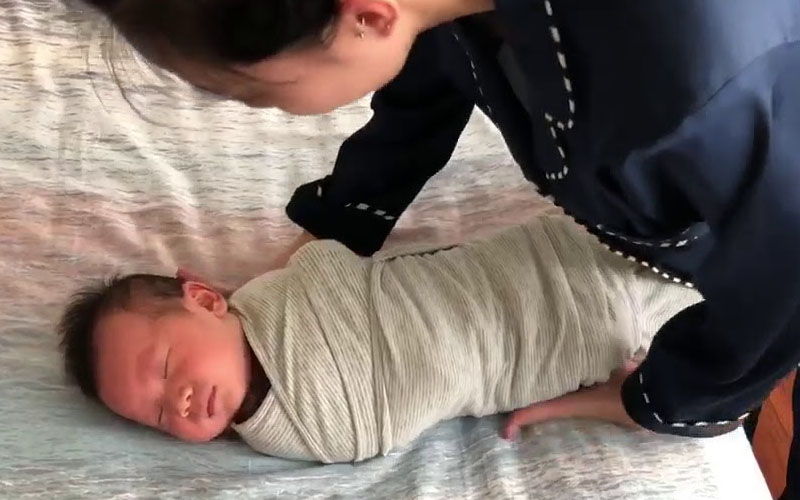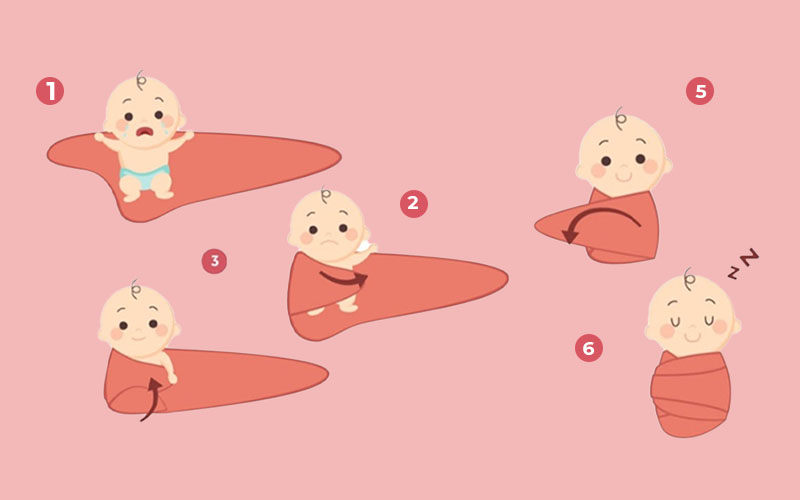Swaddling is a popular practice for newborns, but do you know the benefits and proper techniques? Let’s explore this traditional method and its impact on infants.
1 What is Swaddling?
Swaddling is a technique of wrapping a baby snugly to keep them warm and recreate the cozy environment of the womb. This traditional practice has been used for centuries and is still favored by many parents today.
 What is Swaddling?
What is Swaddling?
2 Benefits of Swaddling
Improved Sleep
Swaddling helps reduce startle reflexes and limits sudden movements during sleep. It provides a sense of security, mimicking the comfort of the womb, resulting in longer and more peaceful sleep for the baby.
Positive Impact on Health
Beyond warmth, swaddling is believed to lower the risk of Sudden Infant Death Syndrome (SIDS) and prevents babies from scratching their faces.
Convenience for Parents
A swaddled baby is easier to hold and carry, and it helps prevent the baby from getting cold.
 Benefits of Swaddling
Benefits of Swaddling
3 Should You Swaddle Your Baby?
As outlined above, swaddling offers several advantages. According to Dr. Jeffrey Hull, a renowned American pediatrician, swaddling helps regulate a baby’s nervous system by reducing the impact of external stimuli, providing a calming effect.
Therefore, swaddling is recommended to support both physical and neurological development.
 Should You Swaddle Your Baby?
Should You Swaddle Your Baby?
4 How to Swaddle Your Baby
 How to Swaddle Your Baby
How to Swaddle Your Baby
5 Important Considerations for Swaddling
Proper Swaddling Technique
Improper swaddling, either too tight or too loose, can affect the baby’s bone development. Avoid straightening or constraining the baby’s legs. Instead, allow the hips and body to move naturally within the swaddle.
Timing is Key
Swaddling is recommended during sleep and when going outdoors. However, avoid swaddling in hot weather, and opt for a hat and light jacket instead.
Gradually Transition Out of Swaddling
In the initial days, leave one of the baby’s arms out of the swaddle to help them adjust. As they get used to it, gradually transition to freeing both arms, then the legs, and finally the whole body.
Observe Your Baby’s Reactions
Not all babies enjoy being swaddled. Some may find it restrictive and prefer to have their arms and legs free to move. Pay attention to your baby’s cues as they grow and adjust the swaddling technique or consider transitioning out of swaddling if needed.
By three to four months of age, babies become more active and curious about their surroundings. Look for signs like squirming, pulling their hands out of the swaddle, or fussing and crying when swaddled, even if they previously settled easily.
 Important Considerations
Important Considerations
We hope this article provided valuable insights into the benefits and techniques of swaddling. Stay tuned for more informative content!































